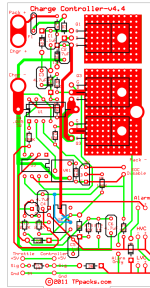fechter said:
Best bet is to populate both main FET positions, but even with one it should handle 20A without getting very warm. Also, at that current, the sensing resistor (the 5 milliohm one), will get pretty hot, but it's solid metal and can take it. Just be careful not to let wires touch against it when you build the board.
So you are saying I should put 2 X Q3 in the 2 positions on the board that says "Q3"? I only ordered 1 from Mouser, I will have to order just a Q3 alone from them.
Can we do something to maybe lower the heat of the 5 milliohm sensing resistor?
Also, I noticed on the board, the Throttle: +5V, Sig, Grd and Controller: +5V, Sig, Grd
Is this a half throttle option mounted directly on the board and integrated? Do I simply have to connect my throttle to the 5V, Sig and Grd of the Throttle side and same with the controller side going to the controller and when the LVC will activate it will half throttle automatically?
You guys thought about everything, thank you Richard, Gary and Andy, you are just amazing.


